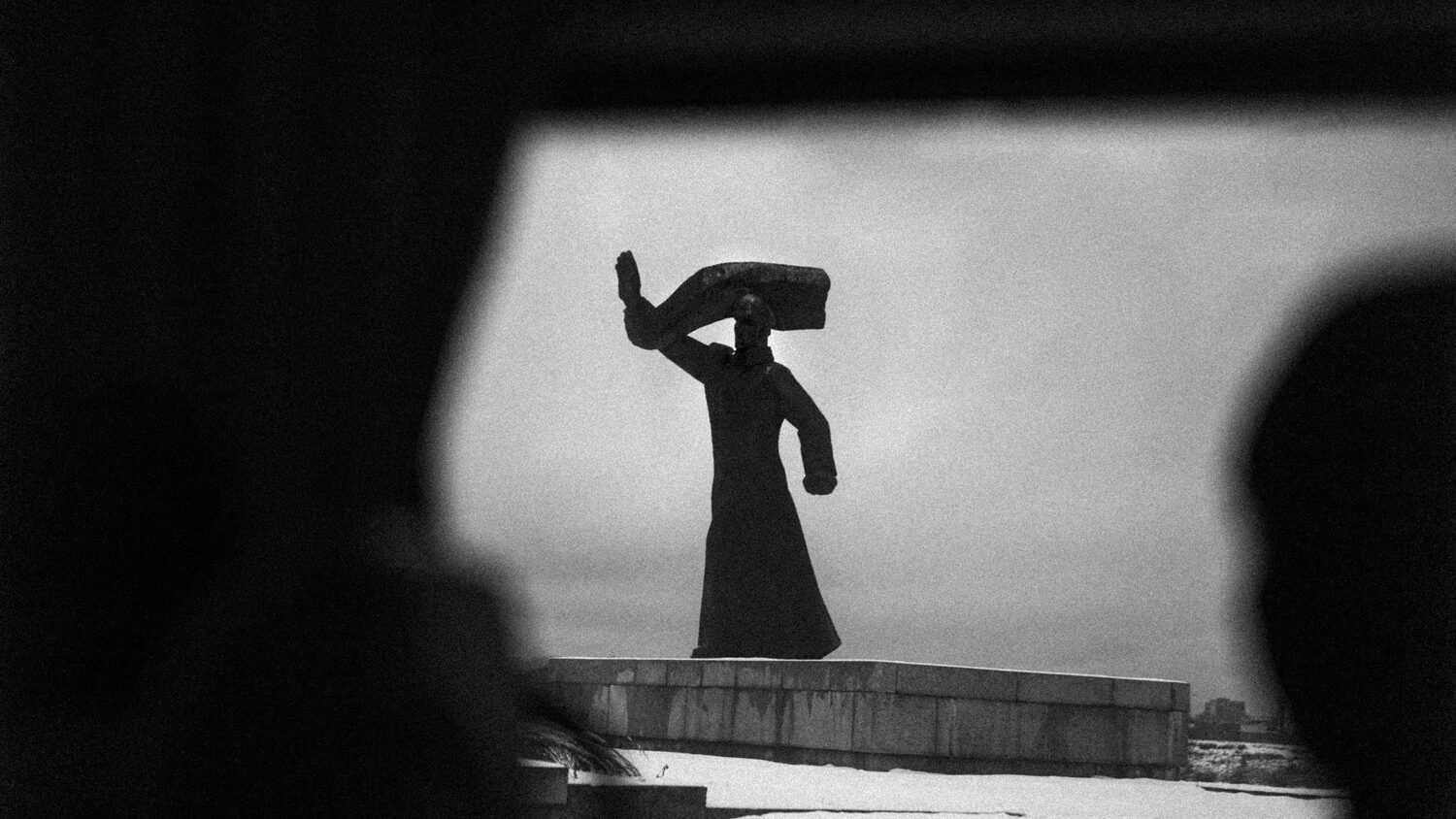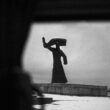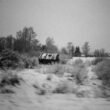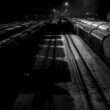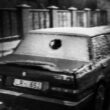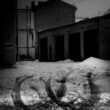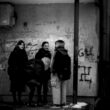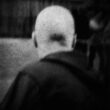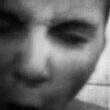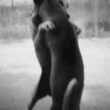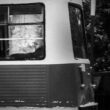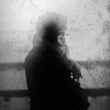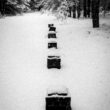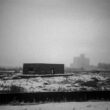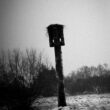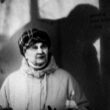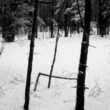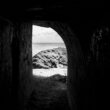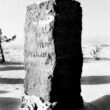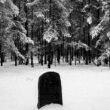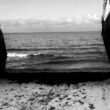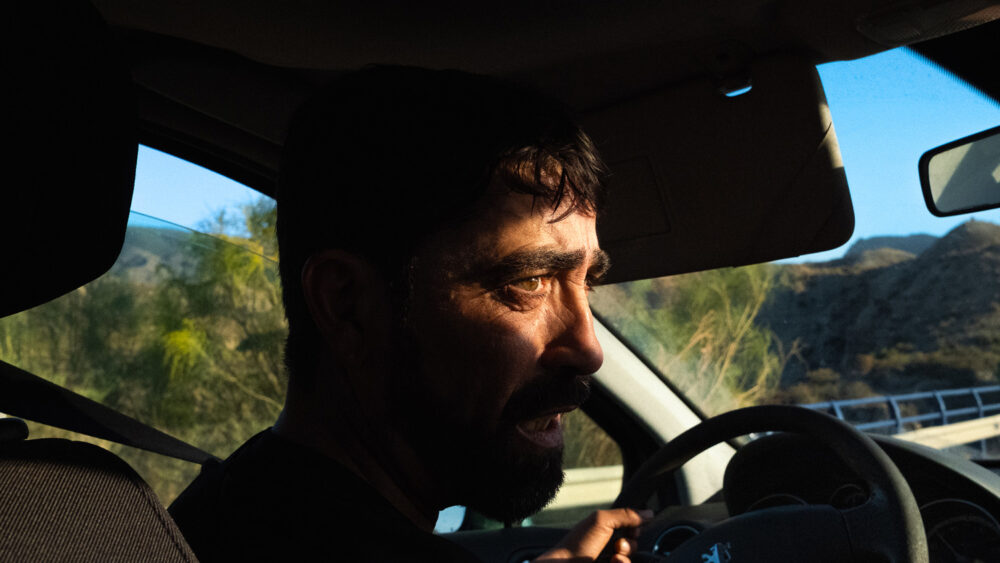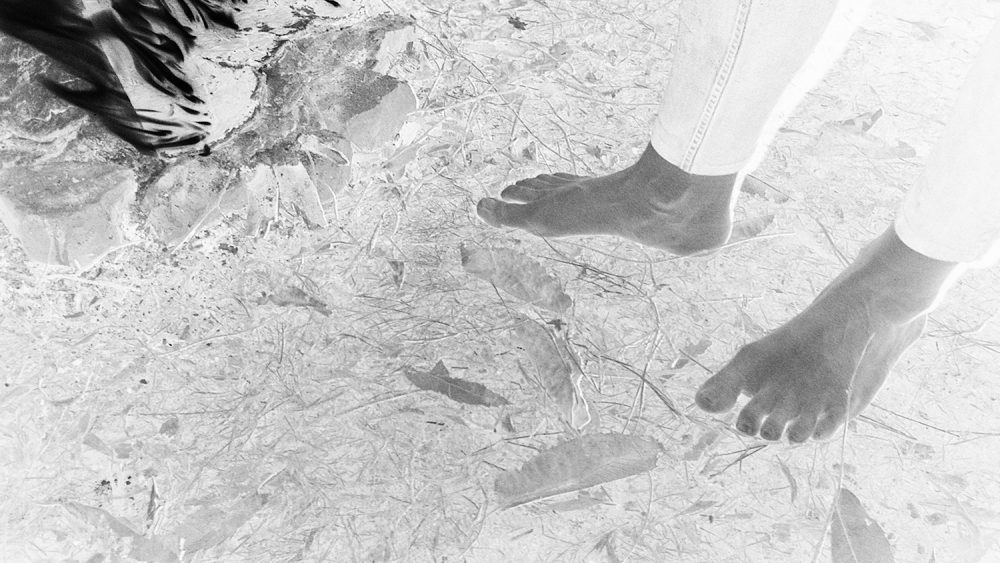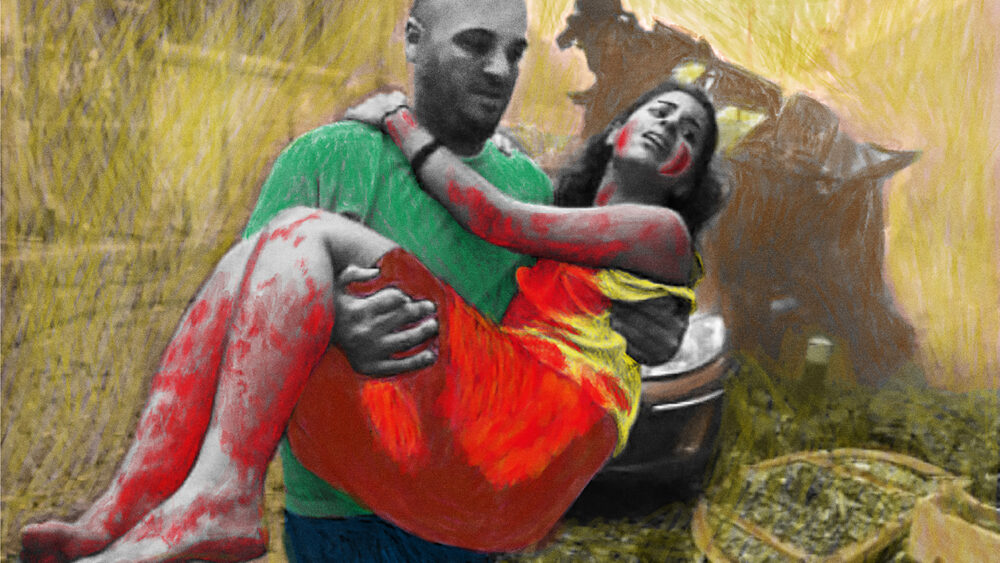Après la patrie et les chiens
A road stretches away from the city, following the river down toward the surrounding woods. Along the way, one passes a ruined fortress, a gas station, and rows of brick garages. Farther ahead, a military base appears, its armored vehicles standing still. The road then climbs through the trees, and little by little, the falling snow covers the last traces of footprints and tire tracks.
At a crossroads, a sprawling concrete structure points the way to a memorial. After a few kilometers of buried asphalt, the road opens onto a parking lot in the middle of the woods. The place is quiet, with only the voices of a young couple posing in front of their car breaking the silence. Behind them, a national war memorial rises a few steps above a long, straight pathway lined with large commemorative plaques. Through the branches, the fading daylight is still visible as the couple leaves, their car engine rumbling into the distance.
There, at the far end of the low wall bordering the pathway, a trail winds between shrubs and tree trunks. Following it, one reaches an indistinct clearing where a dozen wooden crosses emerge from the ground. Animal names are inscribed on the planks, with framed portraits of dogs or cats affixed at their base. But the path does not end there. The horizon remains hidden, but by pushing aside a few branches, one can follow the narrow, winding passage.
At the end of the trail, engraved stones stand planted in the snow. Others lie flat, entirely buried beneath it. Night finally falls. Here, and all around, more than ten thousand Jews were massacred in the summer of 1941.
Daugavpils, Riga, Liepāja, Grobina, Latvia, 2023
Antoine Lecharny (1995) is a photographer and visual artist. His work has been exhibited and awarded both in France and internationally (Jury Prize at the Planches Contact Festival 2021, Audience Award at the Boutographies 2021, HiP Prize for Self-Publishing 2021, finalist for the HSBC Photography Prize 2021 and the Robert Delpire Book Prize 2023…). He is currently preparing a book which will include a series on the sites of mass killings of Jews in Poland, Ukraine (before the war), Lithuania, Latvia, Estonia, Moldova, Slovakia and Romania.
